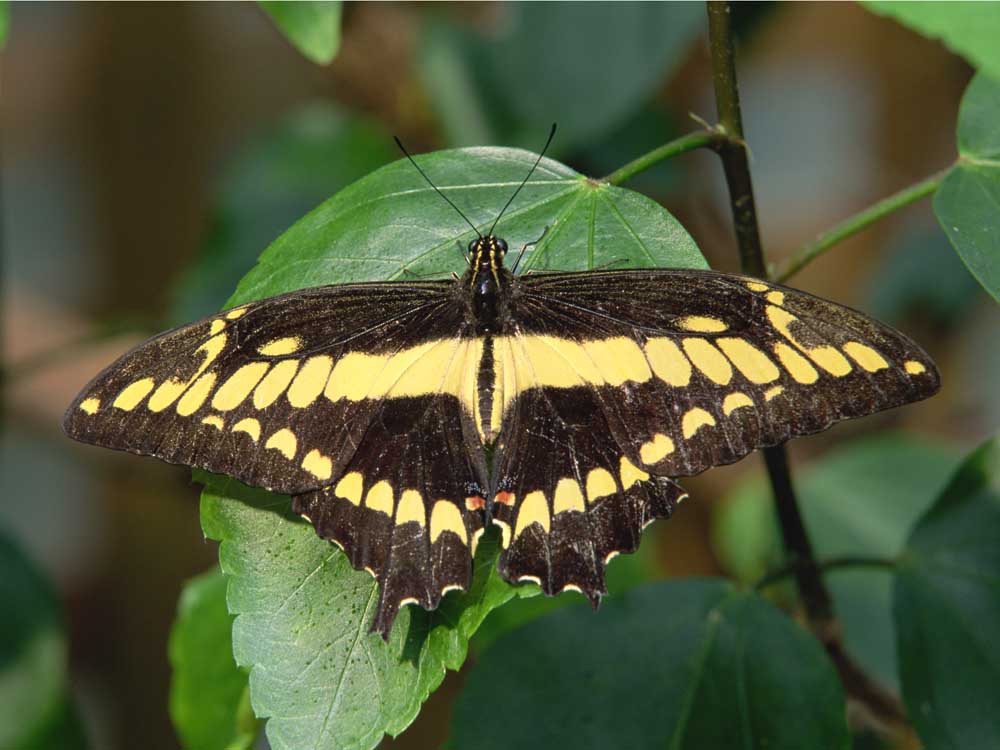A lesson on butterflies
Published 12:00 am Tuesday, August 16, 2016

- ThinkstockButterfliesí color patterns vary widely among species. Brighter colors are often found in males.
A two-piece magnetic butterfly on my screen slider door draws attention to whether the door is open or closed. As I looked at it recently, I thought how little butterfly trivia I know.
For example, how do you tell the difference between male and female butterfly?
Renowned lepidopterist Paul Opler, author of several Peterson Field Guides, offers answers to some basic questions I never really thought about until I stood looking at my butterfly.
• The answer to how to tell the difference between sexes:
The color pattern on the upper wing (dorsal) surfaces often differ in many species. As is often found in nature, the color of the male may be brighter than the female. The behavior is also an indicator. Males are often perching or patrolling in search of females. Females spend a lot of time searching for plants to lay their eggs on.
Eggs are often laid on the particular food plant that young butterflies will eat. Sometimes female butterflies will leave a scent mark on the plant to tell other females that they have already laid eggs there. Many butterflies have special “taste” receptors located on their feet that allow them to find out whether the leaf they sit on is good to lay eggs on and be their caterpillar’s source of food.
• Do butterflies have any natural predators?
It’s hard to think that there are many animals that need to make a meal of butterflies to survive, but it’s true.
Some common predators include wasps, ants, parasitic flies, birds, snakes, toads, rats, lizards and dragonflies.
One thought leads to another and I couldn’t help but wonder what line of defense they have. The research came up with some answers.
Their coloration can act as their camouflage. Some species can collect poisons from plants they eat and hold them in their bodies. The toxic chemicals can be excreted on any predator that attacks them. Swallowtails and monarchs are poisonous to predators.
• Did you ever wonder why a butterfly seems to just be basking in the sun?
It’s probably for the same reason we do — to get warm. Butterflies are cold-blooded creatures. According to one source, butterflies fly at their very best when the temperatures range from 75 degrees to 90 degrees. Another paper stated a temperature range of a minimum temperature of 60 degrees to a maximum of 80 degrees was needed.
You will often see butterflies perched on flowers or leaves with their wings flat down and facing upward toward the sun to absorb as much heat as possible. Butterflies with wings that are darker on the bottom absorb more heat when the wings are folded. I’ll be more observant on my next walkabout through my landscape.
• In 1876, a beautiful swallowtail was first described from a specimen collected near The Dalles by Henry Edwards, a San Francisco stage actor, enthusiastic lepidopterist and vice president of the San Francisco Academy of Sciences. That specimen eventually was named Papilio oregonium, and in 1979 the Legislative Assembly of the State of Oregon adapted the Oregon Swallowtail Butterfly (Papilio oregonius) as Oregon’s official insect.
The beautiful swallowtail is a true native of the northwest and is at home east of the Cascade Mountains and in the lower sagebrush canyons of the Columbia River and its tributaries. The larvae feed on tarragon sagebrush, also called wild tarragon or dragon wormwood. Adults feed on nectar from a variety of wildflowers especially thistles, balsamroot and phlox.
This species is easily confused with the Anise Swallowtail (Papilio zelicaon). The oregonius is usually larger and the color of the abdomen is predominantly yellow with black stripes.
Summertime lesson learned. If you ever start wondering about something, take time to do some research to satisfy that, “Hmmmm, I wonder.” The washing may not get done or dinner may be a little late, but that’s OK. We’re on the summertime clock.
— Reporter: douville@bendbroadband.com






